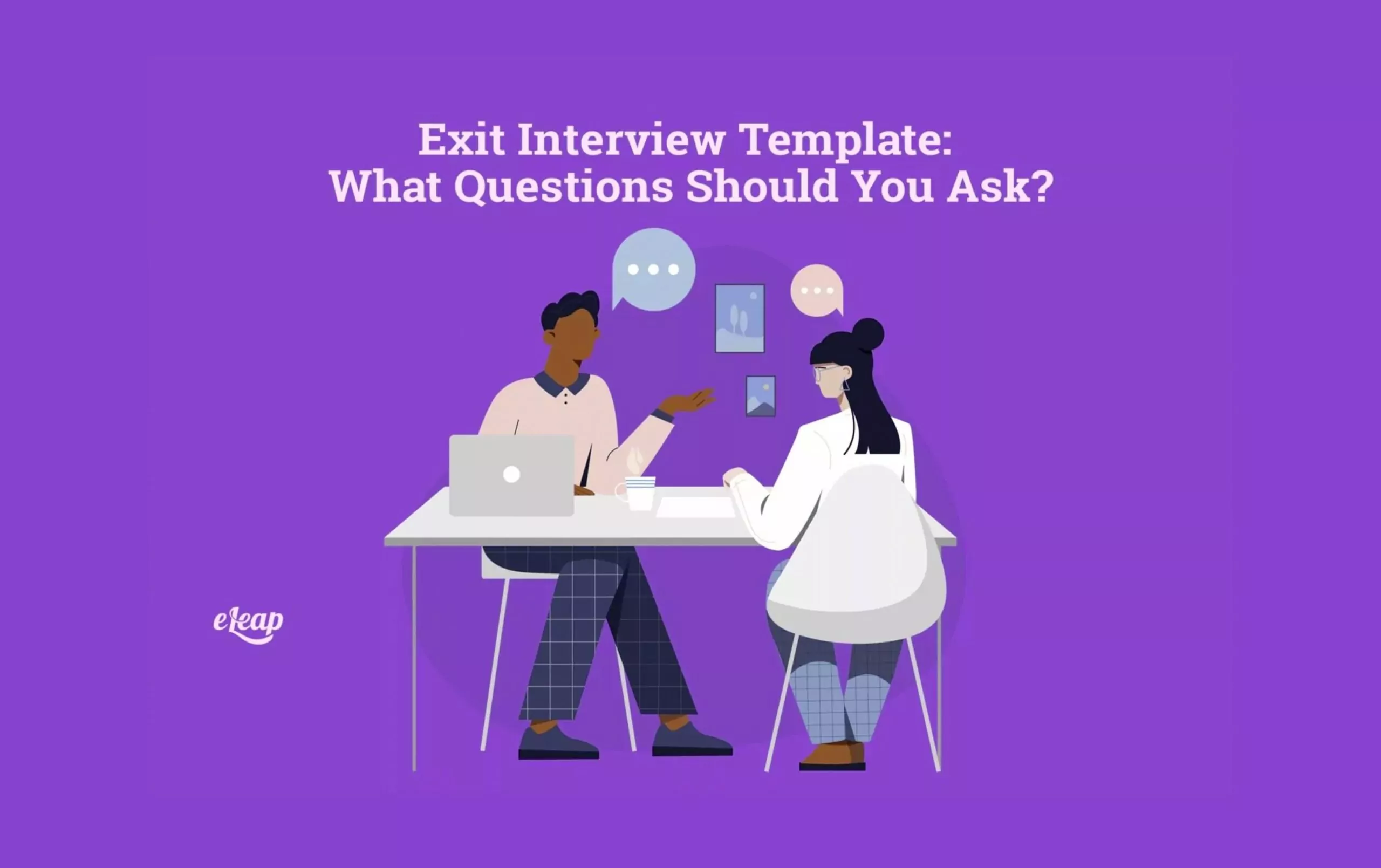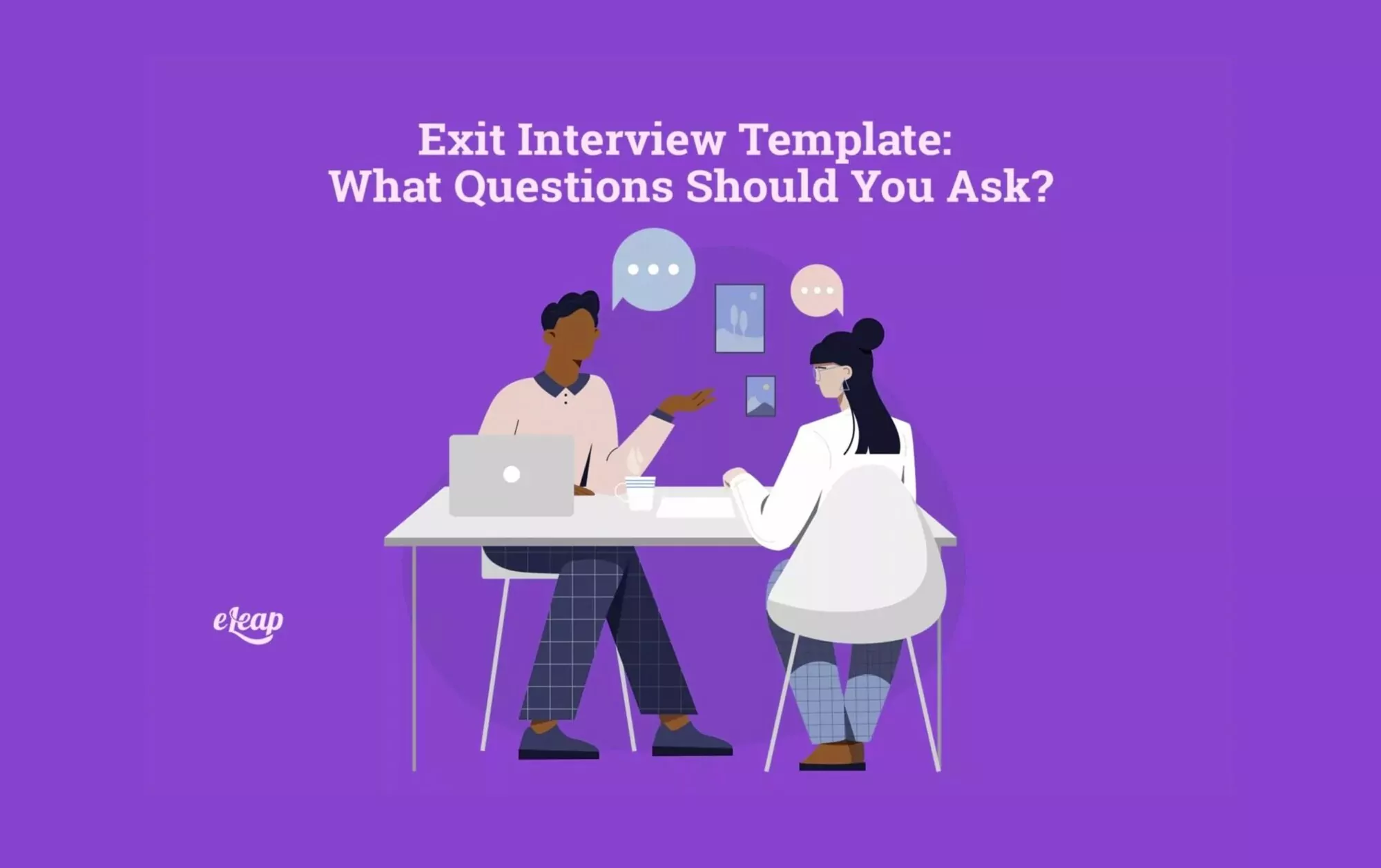Exit Interview Template: What Questions Should You Ask?

When an employee chooses to leave, an exit interview template is needed to determine your next steps. While you want to know what went right and what went wrong during their employment, the process of asking the right questions could be challenging. This is why the creation of a digital exit interview could be beneficial for everyone. It allows closure for the employee and much-needed information for you. Create an exit interview template curated to provide you with information you can build on and hopefully do better in the future.

This article can help you determine which questions to ask during the exit interview in order to capitalize on lessons learned. You want candid feedback, but you also need to be able to wade through the emotions that an exit can create.
Even though it might make you uneasy to read some of the things the employee discloses, it’s important to take the opportunity to grow and make changes that can help propel your business forward.
Why Is an Exit Interview Template Important?
Interestingly, an exit interview template can help you keep your current employees. You might get your best information from the exit interview as the employee leaving isn’t worried about keeping their job. They’re free to be honest about their thoughts and concerns while employed with your agency. That might sound like a loaded situation, but it can be more beneficial than you think.
You can gain valuable knowledge of the true inner workings of your team. You may think you are an interactive manager, but you are still a supervisor and not privy to all the details. Plus, your view of the company is very different than that of your employees.
There are lessons to be learned in how your employees treat each other, especially if some of the offenders are in your management team. Speaking of those details, when asked, you might learn about the conflicts within the team as well. This is not to spread gossip or get in on the drama.
You have the unique opportunity to allow your employee to leave feeling better about the business than they might have when they turned in their notice. To be fair, most employees leave because something wasn’t working. Rarely do they leave when they are happy. By offering them the chance to document their feelings during their time with your business, they can leave without the baggage of what precipitated their departure in the first place.
Don’t Waste Time – Make the Most of the Exit Interview Template
It’s important to focus on what you want to know, not what you already know. For instance, there is no need to ask the employee’s name or what they did with your organization. That’s the best way to let an employee know you never really cared. Don’t waste their time or your time with the things you already know.
The most crucial inquiries involve figuring out what aspects of the situation could have been managed. This will ensure that you have the information necessary to pinpoint areas that need to be altered and make the necessary modifications after you evaluate your findings. Remember, there is little motive behind their answers. Unless you have knowledge otherwise, it’s wise to take in their responses with an open mind.
The responses that you get to these questions will serve as the basis for developing a strategy to address any potential trouble spots that your organization may be up against. It is in your best interest to create the exit interview template in a straightforward yes/no or check box manner to entice better survey participation.
You might think that plenty of employees don’t mind burning bridges when they leave. This is true as well and speaks to the need for continued communication throughout the span of employment. Conducting stay interviews with your staff is an excellent way to track an employee’s timeline. But, if you only have the exit interview to go on, you will need to weigh what disclosures get more attention than others.
Example Initial Exit Interview Template Questions
Start with the basics, but make those basics count. An example of questions to ask that will help you access your current structure is considered control questions. These are the things you could change if needed or situations that you control.
- Did you feel supported by your supervisor?
- Is our culture welcoming?
- Did you have the resources needed to complete your work?
- Did you feel rewarded for your work?
- What areas does the company need to improve in?
- What areas does your supervisor need to improve in?
As you can see, these questions provide you with information that can help you change the current way things are run. You might be surprised by the answers, but take each one and truly process if changes are needed. There may be some emotion behind the answers but try not to take things personally. We all need a little constructive criticism occasionally. Without it, we would never have the opportunity to improve.
Example Secondary Exit Interview Template Questions
The next set of questions can focus on things you might not be able to control. They are more open-ended and allow the employee the chance to explain their side of things. The information is important as the answers may allow you to make changes for future employees that will reduce turnover. When you consider how expensive it can be to train new employees, you will agree that reducing turnover should be at the top of every manager’s to-do list. This is especially true in today’s economic instability.
It’s important to understand that an employee’s departure is typically precipitated by a variety of factors, the majority of which might be outside of your sphere of influence. That is the reason for the second round of exit interview template questions. What if they were content with their job but needed to go because of something that was just something that happened in life? It’s possible that their partner found a new career and they were forced to relocate. They may choose early retirement to help a family member who is ill or care for a grandchild.
Knowing this, the simplest question to ask in this category is if there were reasons unrelated to the position or company that the employee decided to leave. You can follow that up by asking if there’s anything that could have made them stay. The answer to this question might be the one that provides you with future changes for your business.
For instance, if they are changing jobs due to childcare costs, what can you as a manager due for future employees? Could you investigate an onsite daycare or contact local daycares to see if you could acquire a discount for your employees? For parents whose children are in school, can you provide a flex schedule that allows them to either come in after they drop the kids off or leave so they’re home in time to get them off the bus?
Whatever the answers are, take a moment to reflect rather than respond. This employee might not be the only one struggling with this issue.
Final Exit Interview Template Questions
Your company has the potential to understand where the organizational weak points might be if it has access to information regarding the future place of employment. This information works in tandem with the controllable aspects. For example, are your employees leaving to work with a competitor? What benefits or salary ranges are enticing them?
The easier and more direct these inquiries are to understand, the greater the possibility that you will, in fact, receive a response in return. This is due to the fact that the employee has little incentive to provide you with the information since there is not much in it for them.
It’s worth trying if you can stop a mass exodus at the pass. Formulating one to two exit interview template questions will enable a straightforward response, allowing you to evaluate whether or not you need to address the issues further by preparing for others to leave. You might find that some employees are more than willing to offer this information, which is another situation altogether, especially if they are staying in the field.
Conclusion
As you can see, creating an exit interview template and conducting exit interviews can provide you with valuable information. When assessing what you want to ask, focus more on what you want to know. Section out your questions into things you can control, such as if the employee felt valued, versus issues you can’t control. End the interview with the future of the employee.
With this information, you can sort out what it all means and if you need to consider restructuring your policies. When tabulating the results, bring in a few trusted supervisors to also process the answers. Remember, maintain focus, and stay open-minded. When you do, you can learn something from every situation.
You may review a few revisions of your exit survey before deciding on a final template. Once you’re happy with one, don’t let it stand the test of time. Every so often, get out the template and rework it again, especially if you feel you are missing out on key information.
The eLeaP People Success Platform, which includes a continuous performance management system, provides organizations with powerful options to attract and retain high-caliber team members.